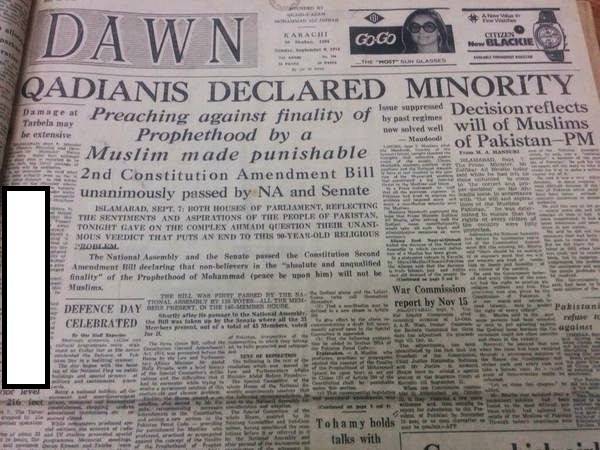
(Taken from the chapter ‘The Implosion of Muslim Modernism in Pakistan’ in Nadeem Farooq Paracha’s second book, The Pakistan Anti-Hero).
The legacy of Pakistan’s former Prime Minister, Zulfikar Ali Bhutto, is a mixed bag of praise, platitudes and panning. Whereas, on the one hand, he is hailed as being perhaps the sharpest and most dazzling politicians ever to grace the country’s political landscape, he is also slammed for being a megalomaniac and a demagogue, readily willing to sideline his democratic principles in his pursuit to retain political power.
Applauded for successfully regenerating a demoralized and fractured country’s pride (after the 1971 East Pakistan debacle), and igniting within the working-classes a sudden sense of political consciousness, Bhutto is also remembered as the man who (to remain in power) continued to play footsie with reactionary political outfits and (thus) ultimately betraying his own party’s democratic and socialist credentials.
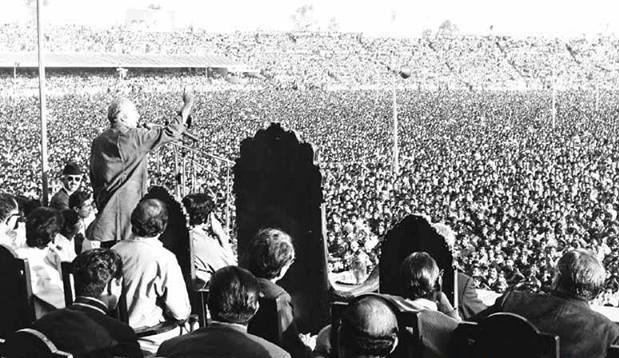
Not only did he attract fierce opposition from the right-wing parties, but the left and liberal sections of the Pakistani intelligentsia have also come down hard on him for capitulating to the demands of right-wing outfits on certain issues. With the ever-increasing problem of religious bigotry and violence that Pakistan has been facing ever since the 1980s, many intellectuals, authors and political historians in the country have blamed the Bhutto government’s 1974 act of constitutionally redefining the status of the Ahmadiyya community as the starting point of what began to mutate into becoming a sectarian monstrosity in the next three decades.
The Ahmadiyya community was (almost overnight) turned into a non-Muslim minority in Pakistan. Many observers correctly point out that by surrendering to the demands of the religious parties in this context (especially after they had resorted to violence), Bhutto unwittingly restored their confidence and status that were badly battered during the 1970 election.
But I believe panning Bhutto for introducing constitutional expressions of bigotry has become too much of a cliché. It’s become a somewhat knee-jerk reaction, and an exercise in which the details of the 1974 event have gotten lost in the eagerness of repeatedly pointing out the starling irony of a left-liberal government passing a controversial theological edict.
I will not go into the theological aspects of what was then called ‘the Ahmadiyya question,’ because I am not academically qualified to do that. Nevertheless, it is important that one attempts to objectively piece together the events that led to the final act. Events that seem to have gotten buried underneath layers of polemical diatribes exchanged between orthodox Muslim scholars and those associated with the Ahmadiyya community; and also due to the somewhat intellectual laziness of the secular intelligentsia that has exhibited a rather myopic understanding and judgment of and on Bhutto’s role in the episode. My take on the issue is by no means an attempt to judge the theological merits or demerits of the bill that constitutionally relegated the Ahmadiyya community as a non-Muslim minority. Mine is just an attempt to bring to light certain events that culminated in the demotion of the Ahmadiyya community.
To do so I did go through some literature produced by orthodox Sunni and Shia ulema and by those associated with the Ahmadiyya community during the commotion, but the literature is largely theological in nature. So I have ignored it because I lack the theological training to comment on it, and anyway, it is hardly helpful in understanding the day-to-day on-ground happenings which led the Bhutto government to turn a demand of his right-wing opponents into a legislative ruling.
Instead, my findings in this respect are squarely based on, and culled from the writings of historians and authors who, I believe, have transcribed the history of the event in the most objective and informed manner. I have also used a plethora of information available in the day-to-day reporting of the commotion by certain Urdu and English newspapers of the time (especially between May and July 1974).
As we have already discoursed elsewhere in this book, a series of modern, as well as puritanical reformist Muslim movements emerged after the complete fall of the Muslim Empire in India in the mid-1800s. The Ahmadiyya movement was one of them. The Ahmadiyya community was founded in 1889 by Mirza Ghulam Ahmad, who claimed he was under divine instruction to fulfil the major prophecies present in Islamic and other sacred texts regarding a ‘world reformer’ who would unite humanity.[1] He announced to Christians awaiting the second coming of Jesus, Muslims anticipating the Mahdi, Hindus expecting Krishna, and Buddhists searching for Buddha, that he was the promised messiah for them all,[2] bespoken by God to rejuvenate true faith.
When Mirza died the Ahmadiyya split into two sects: the ‘Qadianis’ and the ‘Lahoris’.[3] The Qadianis claimed that Mirza was a messiah, and declared that Muslims who did not accept him as such were non-Muslims.[4] Claiming divine prophecy is regarded to be a major sin by a majority of Muslims, even though the Lahori faction believes that Mirza never claimed prophethood.[5] Orthodox Muslim sects in South Asia believe that he did.
As the 19th century reformist movements competed against each other to organize the Muslim community in India, they often clashed among themselves. In their polemical publications, they denounced their counterparts as either being ‘bad Muslims’ (fakir) or outright heretics/infidels (kafir). For example, the Sunni Muslim reformists emerging from seminaries in the Indian city of Deoband (the ‘Deobandis’) denounced another Sunni Muslim sub-sect, the ‘Barelvis,’ of introducing questionable innovations in the practice and rituals of Islam. The Barelvis, a less puritanical Sunni sub-sect, responded in kind. Both, however, were on the same page when it came to Shia Islam and accused the Shias of heresy.
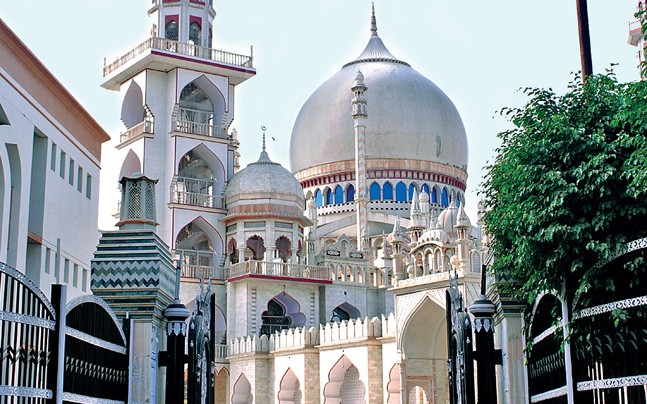
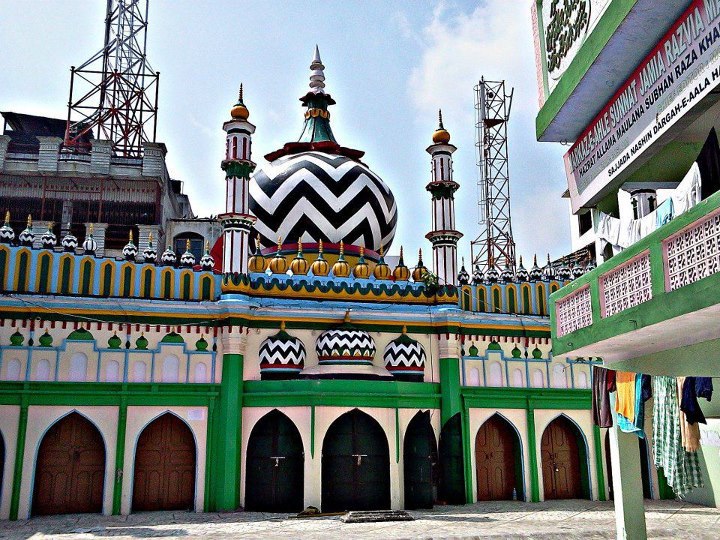
Till about 1913, the Ahmadiyya movement was seen as a spiritual and evangelical branch of the modernist reformist Muslim initiatives triggered by the likes of Sir Syed Ahmad Khan and Syed Ameer Ali. In fact, till the early 1900s, a number of Indian Muslim intellectuals considered Mirza Ghulam Ahmad as a modern redeemer of faith in India.[6] Contrary to popular belief, agitation against the Ahmadiyya movement (by the orthodox Muslim sects and sub-sects in India) did not emerge immediately after the formation of the community in 1889. The more vocal accusations against the community first arose 24 years later in 1914 when an influential Ahmadiyya leader, Mirza Muhammad Ahmad, began to publicly declare that Mirza Ghulam Ahmad was a messiah and those Muslims who disagreed with this were at fault.[7]
This split the movement, with the so-called ‘Qadianis’ sticking to Mirza Muhammad Ahmad’s assertions and the ‘Lahori’ faction denouncing him and accusing him of inferring something that Mirza Ghulam Ahmad did not claimed. Nevertheless, the schism within the Ahmadiyya community and Mirza Muhammad Ahmad’s unabashed claims left the movement vulnerable against accusations of being heretical. The accusations began to pile up in earnest from 1915 onwards and by the 1940s the orthodox ulema began to pressurize the Muslim leadership in India to address the ‘Ahmadiyya question.’ Interestingly, the Ahmadiyya movement allied itself with Jinnah’s All India Muslim League (AIML). During the crucial 1946 election in the Punjab, the main opposition to the Ahmadiyya came from Islamic groups allied to the Indian National Congress (INC); or from Islamic scholars who did not recognize the League to be the sole representative of Indian Muslims.
The League at the time was a mixture of Muslim modernists, secular democrats, pro-Jinnah ulema and even some Marxists. The pro-League ulema, however, advised Jinnah to dissociate himself from the party’s Ahmadiyya members because Islamic outfits that were being backed by the INC were using the issue to question the party’s Muslim credentials. Jinnah ignored the suggestion.[8]
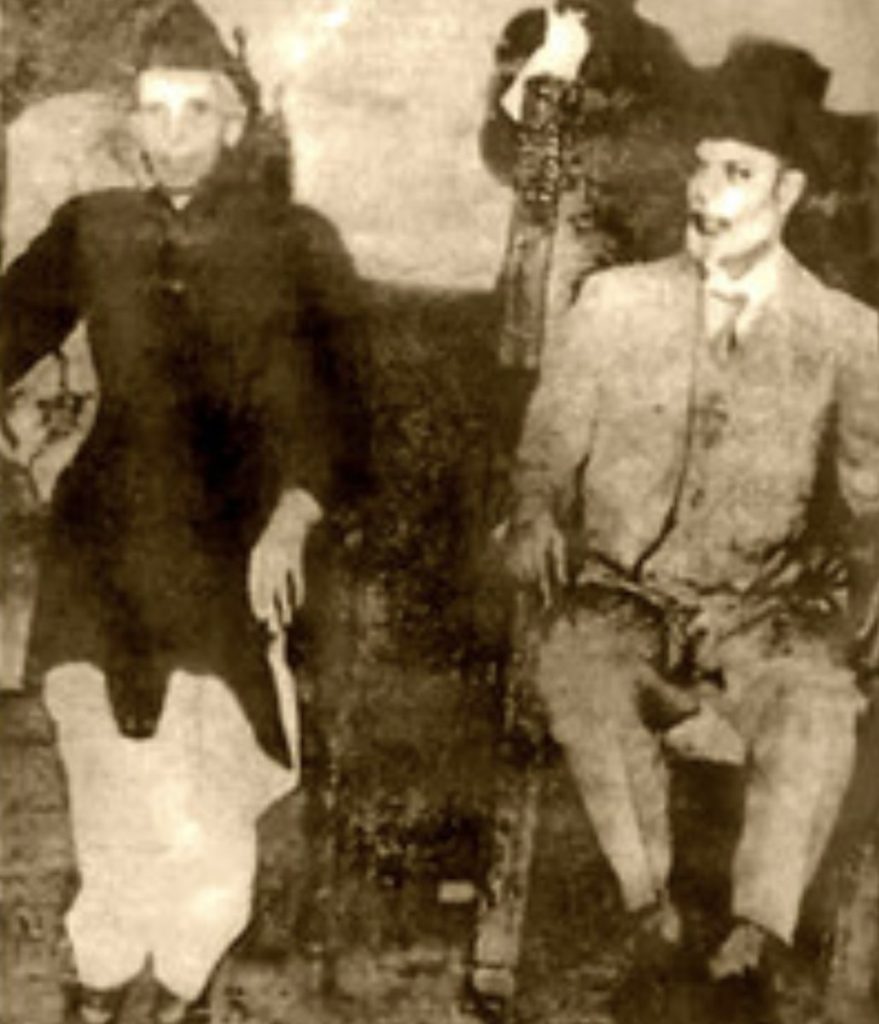
In 1951, three years after the creation of Pakistan, the government initiated an intense crackdown against left-leaning officers in the military, the Communist Party of Pakistan (CPP) and its affiliated trade, student and labour unions. This created just enough of a space for some radical rightist forces to seep in. This opportunity was further widened by the disintegration of the ruling Muslim League that was by then plagued by infighting, corruption and exhaustive power struggles between its main leaders. In 1953 after smelling an opportunity to reinstate their political credentials, the Jamaat-i-Islami (JI) and the Majlis-i-Ahrar gladly played into the hands of the then Chief Minister of Punjab and veteran Muslim Leaguer, Mian Mumtaz Daultana, who was plotting the downfall of his own party’s prime minster, Khuwaja Nazimuddin.[9]
Harboring a burning ambition to become the prime minister after former Prime Minister Liaquat Ali Khan’s assassination in 1951, Daultana was bypassed when the League chose the Bengali Nazimuddin as PM who Daultana had considered to be incompetent. As Chief Minister of Punjab, Daultana was being criticized for the rising graph of unemployment and food shortages in the province.[10] Anticipating protests against his provincial government’s failure to rectify the economic crises in Punjab, Daultana began to allude that the economic crises in the province were mainly the doing of outsiders.[11]
The Ahmadiyya had played a role in the creation of Pakistan and were placed in important positions in the country’s military, bureaucracy, the government and within Pakistan’s still nascent business class. Daultana did not accuse the Ahmadiyya directly. Instead, he purposefully ignored[12] and even gave calculated support to JI and the Ahrar who decided to use the crises in the Punjab by launching a campaign against the Ahmadiyya community, demanding its excommunication from the fold of Islam.
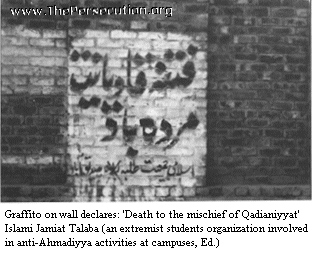
As JI and Ahrar members went on a rampage destroying Ahmadiyya property in Lahore, Daultana was able to shift the media’s attention away from his provincial government’s economic failures. But his triumph was short-lived. The Nazimuddin government with the help of the military crushed the movement and rounded up JI and Ahrar leaders. It then went on to dismiss Daultana. The demand to throw the Ahmadiyya out of the fold of Islam was rejected.
The crackdown against the protesters and the arrest of the movement’s main leaders (on charges of instigating violence against the state) seemed to have buried the Ahmadiyya question once and for all. No significant move to reignite the issue was made for the next 20 years. But when the move did come, it took everyone by surprise.
Ahmadiyya had overwhelmingly voted for the Pakistan People’s Party (PPP) in the Punjab province during the 1970 election. The community was well entrenched in the country’s economy and had not faced any major acts of persecution from the orthodox Islamic parties and the ulema ever since 1954. On May 22, 1974, some 160 members of JI’s student-wing, the IJT, boarded a train headed for Peshawar in the former NWFP. On its way to Peshawar, the train stopped for a while at the Rabwah railway station. The city of Rabwah was predominantly an Ahmadiyya town. The community’s spiritual headquarters were also located here. As the train stopped at Rabwah, IJT students got out and began to raise slogans against the Ahmadiyya[13] and cursed the community’s spiritual figurehead, late Mirza Ghulam Ahmad (during the sloganeering). According to the IJT members, however, they did this because members of the Ahmadiyya community were forcibly distributing ‘propaganda pamphlets’ to the passengers.[14]
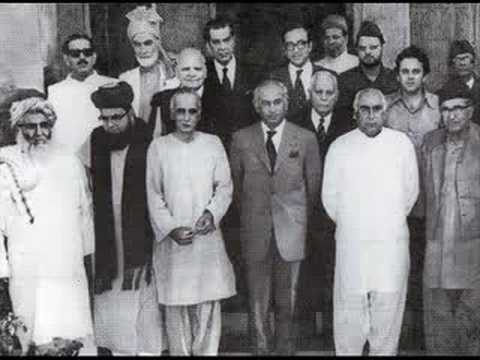
The train then left the station taking the charged students to Peshawar. No untoward incident was reported apart from the slogan-chanting. However, when the incident was related to some Ahmadiyya leaders in Rabwah, they ordered Ahmadiyya youth to reach the station. After finding out that the students would be returning to Multan from Peshawar on the 29th of May, dozens of young Ahmadiyya men gathered at the station. When the targeted train came to a halt, the men fell upon the bogeys carrying the IJT members. A fight ensued and 30 IJT men were severely beaten for insulting the spiritual sentiments of the Ahmadiyya.[15]
A non-Ahmadiyya man who witnessed the commotion at the station told reporters that both the incidents (the slogans and the retaliation) were unprecedented. ‘Someone wanted this to happen,’ he said, without saying who that someone was.[16] Interestingly, whereas the first incident had only been briefly reported by the newspapers, the news of the attack on IJT was prominently displayed in the country’s Urdu press. JI demanded that the culprits of the attack be apprehended or the party would hold countrywide protest rallies. Police arrested 71 Ahmadiyya men in Rabwah and the Punjab government headed by the PPP’s Chief Minister, Hanif Ramay, appointed KM Samadani, a High Court judge, to hold an inquiry into the incident.[17] But this did not stop the JI from launching a protest movement. It was soon joined by other opposition parties which included the centre-right Muslim League, the right-wing Majlis-i-Ahrar and even the centrist Tehrik-i-Istiqlal headed by Asghar Khan. Also joining the protests were various bar associations of the Punjab, orthodox ulema and clerics.
They demanded that Ahmadiyya members be removed from the bureaucracy and government; Ahmadiyya youth outfits be disarmed; and that Rabwah be declared an ‘open city’ because it had become ‘a state within a state.’[18] The protests turned violent and spread across various cities of the Punjab. Mobs attacked houses and businesses owned by the Ahmadiyya. Dozens of members of the Ahmadiyya community lost their lives, mostly in Gujranwala and Sargodha.[19]
The leaders of the protest movement then demanded that the Ahmadiyya be excommunicated from the fold of Islam. On June 4, while speaking on the floor of the National Assembly, Prime Minister Bhutto refused to allow opposition members to speak on the Ahmadiyya issue.[20] He accused the opposition of being ‘hell-bent on destroying the country.’ His party had an overwhelming majority in the assembly and protests from the members on the opposition benches were briskly relegated.
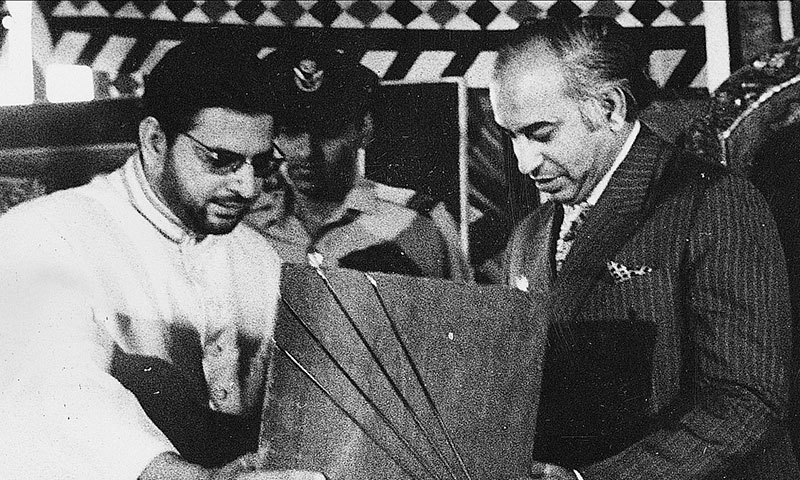
Then, when the riots escalated, Bhutto gave the Punjab CM the green signal to use force to quell the riots. The police came down hard on the rioters and managed to reduce the intensity of the turmoil after a week. On June 14, opposition parties called for a wheel-jam strike. It was successful in the Punjab and in some cities of the former NWFP, but was largely ignored in Sindh and Balochistan.
On June 19, newspapers quoted Bhutto as saying that the government was committed to protecting the lives and property of all Pakistanis and that his government was even willing to use the army for this purpose. He was reminding the opposition how the army had brutally cracked down against anti-Ahmadiyya rioters in 1953. Bhutto then appealed to the opposition that the ‘Ahmadiyya question’ can be settled in a more ‘civilized manner’ without resorting to violence and bigotry. He said now was not the right time.[21] He appeared on TV and radio and insisted that he will not allow ‘savagery and cannibalism’. He said the Ahmadiyya issue had been around for 90 years and could not be solved in a day. He suggested that the issue be referred to the Advisory Council of Islamic Ideology (ACII) - a non-legislative advisory body that was formed by the Ayub Khan dictatorship in the early 1960s and was mostly headed by liberal Islamic scholars.
After the June 14 strike, Bhutto allowed the issue to be discussed in the assembly and told the press that his party members in the House were free to vote on the issue according to their individual conscience.[22] Jamiat Ulema-i-Islam (JUI) chief, Maulana Mufti Mehmood, who was heading the opposition’s stand on the issue, responded by accusing Bhutto of trying to put the Ahmadiyya question in cold storage. ‘A mere resolution in the assembly will be an eyewash,’ he told reporters. ‘Bhutto is trying to sweep the issue underneath the carpet.’
Also watch: Minorities of Pakistan under severe threat
Religious parties, the JI, the JUI and the Barelvi Jamiat Ulema-i-Pakistan (JUP) had formed an ‘Action Committee’ with the centre-right Pakistan Democratic Party (of Nawabzada Nasarullah) and Pir Pagara’s Muslim League faction. They called it Qadiyani Muhasbah Committee (Committee for the Exposition of Qadyanism). Opposition parties such as the left-wing National Awami Party (NAP) remained silent. Mufti Mehmood demanded that a bill be passed in the assembly that would once and for all declare the Ahmadiyya community as a non-Muslim minority. JI’s Mian Tufail demanded the same and warned Bhutto that ‘his double-talk on the Ahmadiyya issue would trigger his downfall.’ The centre-right PDP also joined in the chorus and demanded that a bill be introduced in the Parliament declaring the Ahmadiyya as non-Muslim. Opposition parties and clerics again threatened to take to the streets to force the government to introduce the suggested bill.
Bhutto maintained that declaring the Ahmadiyya a minority and pushing them out from state and government institutions would be detrimental to the economy and political stability of the country. He also protested that the issue was a religious one and hence the National Assembly should not be used to resolve it. The religious parties disagreed. They reminded him of the constitution that all the political parties had approved only a year earlier (1973). They told him that the constitution had declared Pakistan an Islamic Republic so how could he claim that a religious issue had no place in the National Assembly?
It was at about this time that some advisors of Bhutto warned that if the crises was allowed to simmer or sidelined, the party might lose some assembly members in the Punjab[23] who were sympathetic towards the demands of the opposition. On Bhutto’s orders, one of his ministers, Kausar Niazi, led a government delegation that held a series of meetings with the ulema belonging to Sunni (both Deobandi and Barelvi) sub-sects, and the Shia sect. They agreed to form a parliamentary committee to look into the demands of the parties that were leading the anti-Ahmadiyya movement.
The government convinced the members of the committee that the spiritual leader of the Ahmadiyya community also be given the opportunity to present his thoughts and opinion on the issue. After weeks of intense discussions between the parliamentary committee, the ulema and the head of the Ahmadiyya community, the committee decided to finally introduce the bill in the assembly.
Sections of the press stated that a majority of PPP legislators were unwilling to vote for the bill. But even though the report that was prepared by the committee was never made public, parts of it were leaked to the legislators. The report allegedly recorded the head of the Ahmadiyya community telling the committee that he only considered those who were Ahmadiyya as Muslim.[24] On Sept 7, 1974, the bill was passed and the Ahmadiyya became a non-Muslim minority.
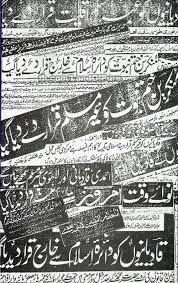
The violence came to a halt after the passage of the bill, but a large number of Ahmadiyya who were actively involved in the fields of business, teaching and the civil service began to move out of Pakistan, leaving behind the less well-to-do members of the community who till this day face regular bouts of violence and harassment.
In another series of ironies, in 1977, the parties that had rejoiced the excommunication of the Ahmadiyya in 1974 were out on the streets again, this time agitating against the very government and man who had agreed to accept their most assertive demand. In the final act of this irony, in April 1979, the same man was sent to the gallows (through a sham murder trial) by the military dictatorship of Ziaul Haq.
In 1984, the Zia dictatorship further consolidated the state’s stance against the Ahmadiyya by issuing an ordinance (Ordinance XX) which prohibited the Ahmadiyya from preaching or professing their beliefs. The ordinance that was enacted to suppress ‘anti-Islamic activities’ forbids Ahmadiyya to call themselves Muslim or to pose as Muslims. Their places of worships cannot be called mosques and they are barred from performing the Muslim call to prayer, using the traditional Islamic greeting in public, publicly quoting from the Quran, preaching in public, seeking converts, or producing, publishing, and disseminating their religious materials.
[1] M G. Ahmad: The Heavenly Decree (Islam International, 2006) p.i
[2] Ibid.
[3] J Azuma: My Neighbor’s Faith (HarperCollins, 2009) p.61
[4] From a 1914 article by Abul Kalam Azad quoted by Z Aziz in The True Succession: The Founding of the Lahore Ahmadiyya Movement (A.A.I.I.L, 2014) p.101
[5] J Azuma: My Neighbor’s Faith (HarperCollins, 2009) p.61
[6] SA Vahid (ed): Thoughts and Reelections of Iqbal (Lahore, 1964) p.297
[7] M Ahmad: A Mighty Striving (2012) p.234
[8] Ibid. p.491
[9] MJ Nelson: In the Shadow of Shariah (Hurst Publishers, 2008) p.122
[10] V. Grover; R. Arora: Political System of Pakistan (Deep & Deep, 1995) p.158
[11] Ibid.
[12] Report on the Court of Inquiry Constituted Under Punjab Act-II on the 1953 Punjab Disturbances (Published in 1954)
[13] Hassan Abbas: Pakistan’s Drift into Extremism (Routledge, 2015) p.82
[14] Ibid.
[15] Anwar H. Syed: The Discourse & Politics of Z A. Bhutto (McMillian Press, 1992)
[16] Morning News (May 25, 1974).
[17] Anwar H. Syed: The Discourse & Politics of Z A. Bhutto (McMillian Press, 1992)
[18] Ibid.
[19] Ibid.
[20] DAWN June 5, 1974.
[21] Morning News, June 20, 1974.
[22] Anwar H. Syed: The Discourse & Politics of Z A. Bhutto (McMillian Press, 1992)
[23] Ibid.
[24] Ibid.
The legacy of Pakistan’s former Prime Minister, Zulfikar Ali Bhutto, is a mixed bag of praise, platitudes and panning. Whereas, on the one hand, he is hailed as being perhaps the sharpest and most dazzling politicians ever to grace the country’s political landscape, he is also slammed for being a megalomaniac and a demagogue, readily willing to sideline his democratic principles in his pursuit to retain political power.
Applauded for successfully regenerating a demoralized and fractured country’s pride (after the 1971 East Pakistan debacle), and igniting within the working-classes a sudden sense of political consciousness, Bhutto is also remembered as the man who (to remain in power) continued to play footsie with reactionary political outfits and (thus) ultimately betraying his own party’s democratic and socialist credentials.

Zulfiquar Ali Bhutto addresses a massive crowd. Source: Marxist.pk
Not only did he attract fierce opposition from the right-wing parties, but the left and liberal sections of the Pakistani intelligentsia have also come down hard on him for capitulating to the demands of right-wing outfits on certain issues. With the ever-increasing problem of religious bigotry and violence that Pakistan has been facing ever since the 1980s, many intellectuals, authors and political historians in the country have blamed the Bhutto government’s 1974 act of constitutionally redefining the status of the Ahmadiyya community as the starting point of what began to mutate into becoming a sectarian monstrosity in the next three decades.
The Ahmadiyya community was (almost overnight) turned into a non-Muslim minority in Pakistan. Many observers correctly point out that by surrendering to the demands of the religious parties in this context (especially after they had resorted to violence), Bhutto unwittingly restored their confidence and status that were badly battered during the 1970 election.
But I believe panning Bhutto for introducing constitutional expressions of bigotry has become too much of a cliché. It’s become a somewhat knee-jerk reaction, and an exercise in which the details of the 1974 event have gotten lost in the eagerness of repeatedly pointing out the starling irony of a left-liberal government passing a controversial theological edict.
I will not go into the theological aspects of what was then called ‘the Ahmadiyya question,’ because I am not academically qualified to do that. Nevertheless, it is important that one attempts to objectively piece together the events that led to the final act. Events that seem to have gotten buried underneath layers of polemical diatribes exchanged between orthodox Muslim scholars and those associated with the Ahmadiyya community; and also due to the somewhat intellectual laziness of the secular intelligentsia that has exhibited a rather myopic understanding and judgment of and on Bhutto’s role in the episode. My take on the issue is by no means an attempt to judge the theological merits or demerits of the bill that constitutionally relegated the Ahmadiyya community as a non-Muslim minority. Mine is just an attempt to bring to light certain events that culminated in the demotion of the Ahmadiyya community.
To do so I did go through some literature produced by orthodox Sunni and Shia ulema and by those associated with the Ahmadiyya community during the commotion, but the literature is largely theological in nature. So I have ignored it because I lack the theological training to comment on it, and anyway, it is hardly helpful in understanding the day-to-day on-ground happenings which led the Bhutto government to turn a demand of his right-wing opponents into a legislative ruling.
Instead, my findings in this respect are squarely based on, and culled from the writings of historians and authors who, I believe, have transcribed the history of the event in the most objective and informed manner. I have also used a plethora of information available in the day-to-day reporting of the commotion by certain Urdu and English newspapers of the time (especially between May and July 1974).
As we have already discoursed elsewhere in this book, a series of modern, as well as puritanical reformist Muslim movements emerged after the complete fall of the Muslim Empire in India in the mid-1800s. The Ahmadiyya movement was one of them. The Ahmadiyya community was founded in 1889 by Mirza Ghulam Ahmad, who claimed he was under divine instruction to fulfil the major prophecies present in Islamic and other sacred texts regarding a ‘world reformer’ who would unite humanity.[1] He announced to Christians awaiting the second coming of Jesus, Muslims anticipating the Mahdi, Hindus expecting Krishna, and Buddhists searching for Buddha, that he was the promised messiah for them all,[2] bespoken by God to rejuvenate true faith.
When Mirza died the Ahmadiyya split into two sects: the ‘Qadianis’ and the ‘Lahoris’.[3] The Qadianis claimed that Mirza was a messiah, and declared that Muslims who did not accept him as such were non-Muslims.[4] Claiming divine prophecy is regarded to be a major sin by a majority of Muslims, even though the Lahori faction believes that Mirza never claimed prophethood.[5] Orthodox Muslim sects in South Asia believe that he did.
As the 19th century reformist movements competed against each other to organize the Muslim community in India, they often clashed among themselves. In their polemical publications, they denounced their counterparts as either being ‘bad Muslims’ (fakir) or outright heretics/infidels (kafir). For example, the Sunni Muslim reformists emerging from seminaries in the Indian city of Deoband (the ‘Deobandis’) denounced another Sunni Muslim sub-sect, the ‘Barelvis,’ of introducing questionable innovations in the practice and rituals of Islam. The Barelvis, a less puritanical Sunni sub-sect, responded in kind. Both, however, were on the same page when it came to Shia Islam and accused the Shias of heresy.

Darul Uloom Deoband

Shrine of Ahmad Raza Khan of Bareli
Till about 1913, the Ahmadiyya movement was seen as a spiritual and evangelical branch of the modernist reformist Muslim initiatives triggered by the likes of Sir Syed Ahmad Khan and Syed Ameer Ali. In fact, till the early 1900s, a number of Indian Muslim intellectuals considered Mirza Ghulam Ahmad as a modern redeemer of faith in India.[6] Contrary to popular belief, agitation against the Ahmadiyya movement (by the orthodox Muslim sects and sub-sects in India) did not emerge immediately after the formation of the community in 1889. The more vocal accusations against the community first arose 24 years later in 1914 when an influential Ahmadiyya leader, Mirza Muhammad Ahmad, began to publicly declare that Mirza Ghulam Ahmad was a messiah and those Muslims who disagreed with this were at fault.[7]
This split the movement, with the so-called ‘Qadianis’ sticking to Mirza Muhammad Ahmad’s assertions and the ‘Lahori’ faction denouncing him and accusing him of inferring something that Mirza Ghulam Ahmad did not claimed. Nevertheless, the schism within the Ahmadiyya community and Mirza Muhammad Ahmad’s unabashed claims left the movement vulnerable against accusations of being heretical. The accusations began to pile up in earnest from 1915 onwards and by the 1940s the orthodox ulema began to pressurize the Muslim leadership in India to address the ‘Ahmadiyya question.’ Interestingly, the Ahmadiyya movement allied itself with Jinnah’s All India Muslim League (AIML). During the crucial 1946 election in the Punjab, the main opposition to the Ahmadiyya came from Islamic groups allied to the Indian National Congress (INC); or from Islamic scholars who did not recognize the League to be the sole representative of Indian Muslims.
The League at the time was a mixture of Muslim modernists, secular democrats, pro-Jinnah ulema and even some Marxists. The pro-League ulema, however, advised Jinnah to dissociate himself from the party’s Ahmadiyya members because Islamic outfits that were being backed by the INC were using the issue to question the party’s Muslim credentials. Jinnah ignored the suggestion.[8]

Quaid-e-Azam Muhammad Ali Jinnah with Sir Zafarullah Khan
In 1951, three years after the creation of Pakistan, the government initiated an intense crackdown against left-leaning officers in the military, the Communist Party of Pakistan (CPP) and its affiliated trade, student and labour unions. This created just enough of a space for some radical rightist forces to seep in. This opportunity was further widened by the disintegration of the ruling Muslim League that was by then plagued by infighting, corruption and exhaustive power struggles between its main leaders. In 1953 after smelling an opportunity to reinstate their political credentials, the Jamaat-i-Islami (JI) and the Majlis-i-Ahrar gladly played into the hands of the then Chief Minister of Punjab and veteran Muslim Leaguer, Mian Mumtaz Daultana, who was plotting the downfall of his own party’s prime minster, Khuwaja Nazimuddin.[9]
Harboring a burning ambition to become the prime minister after former Prime Minister Liaquat Ali Khan’s assassination in 1951, Daultana was bypassed when the League chose the Bengali Nazimuddin as PM who Daultana had considered to be incompetent. As Chief Minister of Punjab, Daultana was being criticized for the rising graph of unemployment and food shortages in the province.[10] Anticipating protests against his provincial government’s failure to rectify the economic crises in Punjab, Daultana began to allude that the economic crises in the province were mainly the doing of outsiders.[11]
The Ahmadiyya had played a role in the creation of Pakistan and were placed in important positions in the country’s military, bureaucracy, the government and within Pakistan’s still nascent business class. Daultana did not accuse the Ahmadiyya directly. Instead, he purposefully ignored[12] and even gave calculated support to JI and the Ahrar who decided to use the crises in the Punjab by launching a campaign against the Ahmadiyya community, demanding its excommunication from the fold of Islam.

Courtesy Dawn.com
As JI and Ahrar members went on a rampage destroying Ahmadiyya property in Lahore, Daultana was able to shift the media’s attention away from his provincial government’s economic failures. But his triumph was short-lived. The Nazimuddin government with the help of the military crushed the movement and rounded up JI and Ahrar leaders. It then went on to dismiss Daultana. The demand to throw the Ahmadiyya out of the fold of Islam was rejected.
The crackdown against the protesters and the arrest of the movement’s main leaders (on charges of instigating violence against the state) seemed to have buried the Ahmadiyya question once and for all. No significant move to reignite the issue was made for the next 20 years. But when the move did come, it took everyone by surprise.
Ahmadiyya had overwhelmingly voted for the Pakistan People’s Party (PPP) in the Punjab province during the 1970 election. The community was well entrenched in the country’s economy and had not faced any major acts of persecution from the orthodox Islamic parties and the ulema ever since 1954. On May 22, 1974, some 160 members of JI’s student-wing, the IJT, boarded a train headed for Peshawar in the former NWFP. On its way to Peshawar, the train stopped for a while at the Rabwah railway station. The city of Rabwah was predominantly an Ahmadiyya town. The community’s spiritual headquarters were also located here. As the train stopped at Rabwah, IJT students got out and began to raise slogans against the Ahmadiyya[13] and cursed the community’s spiritual figurehead, late Mirza Ghulam Ahmad (during the sloganeering). According to the IJT members, however, they did this because members of the Ahmadiyya community were forcibly distributing ‘propaganda pamphlets’ to the passengers.[14]

The leaders of the 1970 parliament that declared Ahmadis as heretics.
The train then left the station taking the charged students to Peshawar. No untoward incident was reported apart from the slogan-chanting. However, when the incident was related to some Ahmadiyya leaders in Rabwah, they ordered Ahmadiyya youth to reach the station. After finding out that the students would be returning to Multan from Peshawar on the 29th of May, dozens of young Ahmadiyya men gathered at the station. When the targeted train came to a halt, the men fell upon the bogeys carrying the IJT members. A fight ensued and 30 IJT men were severely beaten for insulting the spiritual sentiments of the Ahmadiyya.[15]
A non-Ahmadiyya man who witnessed the commotion at the station told reporters that both the incidents (the slogans and the retaliation) were unprecedented. ‘Someone wanted this to happen,’ he said, without saying who that someone was.[16] Interestingly, whereas the first incident had only been briefly reported by the newspapers, the news of the attack on IJT was prominently displayed in the country’s Urdu press. JI demanded that the culprits of the attack be apprehended or the party would hold countrywide protest rallies. Police arrested 71 Ahmadiyya men in Rabwah and the Punjab government headed by the PPP’s Chief Minister, Hanif Ramay, appointed KM Samadani, a High Court judge, to hold an inquiry into the incident.[17] But this did not stop the JI from launching a protest movement. It was soon joined by other opposition parties which included the centre-right Muslim League, the right-wing Majlis-i-Ahrar and even the centrist Tehrik-i-Istiqlal headed by Asghar Khan. Also joining the protests were various bar associations of the Punjab, orthodox ulema and clerics.
They demanded that Ahmadiyya members be removed from the bureaucracy and government; Ahmadiyya youth outfits be disarmed; and that Rabwah be declared an ‘open city’ because it had become ‘a state within a state.’[18] The protests turned violent and spread across various cities of the Punjab. Mobs attacked houses and businesses owned by the Ahmadiyya. Dozens of members of the Ahmadiyya community lost their lives, mostly in Gujranwala and Sargodha.[19]
The leaders of the protest movement then demanded that the Ahmadiyya be excommunicated from the fold of Islam. On June 4, while speaking on the floor of the National Assembly, Prime Minister Bhutto refused to allow opposition members to speak on the Ahmadiyya issue.[20] He accused the opposition of being ‘hell-bent on destroying the country.’ His party had an overwhelming majority in the assembly and protests from the members on the opposition benches were briskly relegated.

Maulana Kausar Niazi with Zulfiquar Ali Bhutto
Then, when the riots escalated, Bhutto gave the Punjab CM the green signal to use force to quell the riots. The police came down hard on the rioters and managed to reduce the intensity of the turmoil after a week. On June 14, opposition parties called for a wheel-jam strike. It was successful in the Punjab and in some cities of the former NWFP, but was largely ignored in Sindh and Balochistan.
On June 19, newspapers quoted Bhutto as saying that the government was committed to protecting the lives and property of all Pakistanis and that his government was even willing to use the army for this purpose. He was reminding the opposition how the army had brutally cracked down against anti-Ahmadiyya rioters in 1953. Bhutto then appealed to the opposition that the ‘Ahmadiyya question’ can be settled in a more ‘civilized manner’ without resorting to violence and bigotry. He said now was not the right time.[21] He appeared on TV and radio and insisted that he will not allow ‘savagery and cannibalism’. He said the Ahmadiyya issue had been around for 90 years and could not be solved in a day. He suggested that the issue be referred to the Advisory Council of Islamic Ideology (ACII) - a non-legislative advisory body that was formed by the Ayub Khan dictatorship in the early 1960s and was mostly headed by liberal Islamic scholars.
After the June 14 strike, Bhutto allowed the issue to be discussed in the assembly and told the press that his party members in the House were free to vote on the issue according to their individual conscience.[22] Jamiat Ulema-i-Islam (JUI) chief, Maulana Mufti Mehmood, who was heading the opposition’s stand on the issue, responded by accusing Bhutto of trying to put the Ahmadiyya question in cold storage. ‘A mere resolution in the assembly will be an eyewash,’ he told reporters. ‘Bhutto is trying to sweep the issue underneath the carpet.’
Also watch: Minorities of Pakistan under severe threat
Religious parties, the JI, the JUI and the Barelvi Jamiat Ulema-i-Pakistan (JUP) had formed an ‘Action Committee’ with the centre-right Pakistan Democratic Party (of Nawabzada Nasarullah) and Pir Pagara’s Muslim League faction. They called it Qadiyani Muhasbah Committee (Committee for the Exposition of Qadyanism). Opposition parties such as the left-wing National Awami Party (NAP) remained silent. Mufti Mehmood demanded that a bill be passed in the assembly that would once and for all declare the Ahmadiyya community as a non-Muslim minority. JI’s Mian Tufail demanded the same and warned Bhutto that ‘his double-talk on the Ahmadiyya issue would trigger his downfall.’ The centre-right PDP also joined in the chorus and demanded that a bill be introduced in the Parliament declaring the Ahmadiyya as non-Muslim. Opposition parties and clerics again threatened to take to the streets to force the government to introduce the suggested bill.
Bhutto maintained that declaring the Ahmadiyya a minority and pushing them out from state and government institutions would be detrimental to the economy and political stability of the country. He also protested that the issue was a religious one and hence the National Assembly should not be used to resolve it. The religious parties disagreed. They reminded him of the constitution that all the political parties had approved only a year earlier (1973). They told him that the constitution had declared Pakistan an Islamic Republic so how could he claim that a religious issue had no place in the National Assembly?
It was at about this time that some advisors of Bhutto warned that if the crises was allowed to simmer or sidelined, the party might lose some assembly members in the Punjab[23] who were sympathetic towards the demands of the opposition. On Bhutto’s orders, one of his ministers, Kausar Niazi, led a government delegation that held a series of meetings with the ulema belonging to Sunni (both Deobandi and Barelvi) sub-sects, and the Shia sect. They agreed to form a parliamentary committee to look into the demands of the parties that were leading the anti-Ahmadiyya movement.
The government convinced the members of the committee that the spiritual leader of the Ahmadiyya community also be given the opportunity to present his thoughts and opinion on the issue. After weeks of intense discussions between the parliamentary committee, the ulema and the head of the Ahmadiyya community, the committee decided to finally introduce the bill in the assembly.
Sections of the press stated that a majority of PPP legislators were unwilling to vote for the bill. But even though the report that was prepared by the committee was never made public, parts of it were leaked to the legislators. The report allegedly recorded the head of the Ahmadiyya community telling the committee that he only considered those who were Ahmadiyya as Muslim.[24] On Sept 7, 1974, the bill was passed and the Ahmadiyya became a non-Muslim minority.

Courtesy LUBPAK
The violence came to a halt after the passage of the bill, but a large number of Ahmadiyya who were actively involved in the fields of business, teaching and the civil service began to move out of Pakistan, leaving behind the less well-to-do members of the community who till this day face regular bouts of violence and harassment.
In another series of ironies, in 1977, the parties that had rejoiced the excommunication of the Ahmadiyya in 1974 were out on the streets again, this time agitating against the very government and man who had agreed to accept their most assertive demand. In the final act of this irony, in April 1979, the same man was sent to the gallows (through a sham murder trial) by the military dictatorship of Ziaul Haq.
In 1984, the Zia dictatorship further consolidated the state’s stance against the Ahmadiyya by issuing an ordinance (Ordinance XX) which prohibited the Ahmadiyya from preaching or professing their beliefs. The ordinance that was enacted to suppress ‘anti-Islamic activities’ forbids Ahmadiyya to call themselves Muslim or to pose as Muslims. Their places of worships cannot be called mosques and they are barred from performing the Muslim call to prayer, using the traditional Islamic greeting in public, publicly quoting from the Quran, preaching in public, seeking converts, or producing, publishing, and disseminating their religious materials.
[1] M G. Ahmad: The Heavenly Decree (Islam International, 2006) p.i
[2] Ibid.
[3] J Azuma: My Neighbor’s Faith (HarperCollins, 2009) p.61
[4] From a 1914 article by Abul Kalam Azad quoted by Z Aziz in The True Succession: The Founding of the Lahore Ahmadiyya Movement (A.A.I.I.L, 2014) p.101
[5] J Azuma: My Neighbor’s Faith (HarperCollins, 2009) p.61
[6] SA Vahid (ed): Thoughts and Reelections of Iqbal (Lahore, 1964) p.297
[7] M Ahmad: A Mighty Striving (2012) p.234
[8] Ibid. p.491
[9] MJ Nelson: In the Shadow of Shariah (Hurst Publishers, 2008) p.122
[10] V. Grover; R. Arora: Political System of Pakistan (Deep & Deep, 1995) p.158
[11] Ibid.
[12] Report on the Court of Inquiry Constituted Under Punjab Act-II on the 1953 Punjab Disturbances (Published in 1954)
[13] Hassan Abbas: Pakistan’s Drift into Extremism (Routledge, 2015) p.82
[14] Ibid.
[15] Anwar H. Syed: The Discourse & Politics of Z A. Bhutto (McMillian Press, 1992)
[16] Morning News (May 25, 1974).
[17] Anwar H. Syed: The Discourse & Politics of Z A. Bhutto (McMillian Press, 1992)
[18] Ibid.
[19] Ibid.
[20] DAWN June 5, 1974.
[21] Morning News, June 20, 1974.
[22] Anwar H. Syed: The Discourse & Politics of Z A. Bhutto (McMillian Press, 1992)
[23] Ibid.
[24] Ibid.
